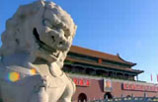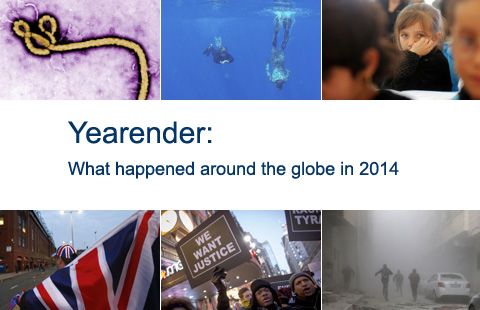Creating something new from old
Updated: 2015-03-20 07:40
By Ning Hui(China Daily Europe)
|
|||||||||||
|
The Silk Equus (right), a double-sided silk embroidery tableau of Tim Flach's most recognizable horseback photograph (left). Provided to China Daily |
Huang is one of the pioneers in such exploration. She started practicing embroidery at 7 and has, for decades, searched for inspiration from oil paintings, traditional Chinese ink paintings and realistic paintings. When Huang first saw Flach's horseback photo, she says, its abstract form and soothing lighting moved her immediately. "It gives the audience a lot of space for imagination."
Recalling the challenges in the process, she says: "Photography is especially difficult for embroidery because it requires great attention to its subtle light and shadows.
"The original artwork, be it painting or photograph, they serve as blueprint while the recreation is a result of an in-depth study with personal appreciation."
For the horseback photo, Huang hand-picked the 80 colors needed for the work and used dozens of different types of stitches. "Because the picture has a very simple yet abstract frame," she says, "while I was working on it, none of my colleagues could tell what the picture was about. It's my own journey."
The exhibition where the Silk Equus made its first appearance is called "Flow: Transformation Materials in Contemporary Chinese Craft". Part of the 2015 UK-China Year of Culture exchange events, the exhibition features selected works from 12 individual craft design workshops from Hangzhou, Zhejiang province, a nearby city from Suzhou.
Along with the Su Xiu silk piece, the exhibited crafts from Hangzhou demonstrate not only a resurgence of traditional skills - in terms of the use of bamboo, silk and ceramics, but also a sense of "blending", where the old meets the new.
A UNESCO-listed craft and folk-art city, modern Hangzhou has the creative power of the celebrated China Academy of Art, now presided over by the Pritzker prize-winning architect Wang Shu. Wang's work was once described as "evoking the past without direct reference to history", a statement the exhibition "Flow" was set to follow.
To successfully communicate and achieve blending, Jack Qu, executive director of the China Design Center, says, "It is important to first demonstrate to a different audience how traditional skills work."
As the connection behind Flach and Huang's collaboration, says he hopes the familiarity Western audiences have with Flach's work will help them better enjoy the silk embroidery. Both Flach and Huang are now planning for further collaborations.
"As the China season of the UK-China cultural exchange year is to welcome hundreds more activities in UK, I hope different communities can work together to explore the core concept of creativity," says Cultural Minister Counsellor Xiang Xiaowei, from the Chinese embassy in the UK.
For China Daily
( China Daily European Weekly 03/20/2015 page30)
Today's Top News
Russia, China to uphold WWII history
Sanctions linked to Minsk deal implementation: EU
Australia to invest A$3b in AIIB
Germany insists Greece must stick to bailout agreement
Manhunt launched for accomplices in Tunisian museum attack
Chanel to reduce prices in China
Russian FM slams Kiev for turning Minsk agreements 'upside down'
European chamber calls on China to boost reforms
Hot Topics
Lunar probe , China growth forecasts, Emission rules get tougher, China seen through 'colored lens', International board,
Editor's Picks

|

|

|

|

|

|






